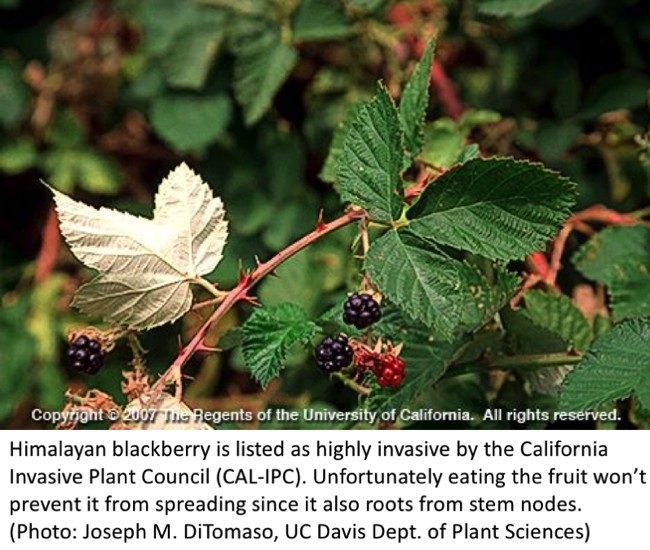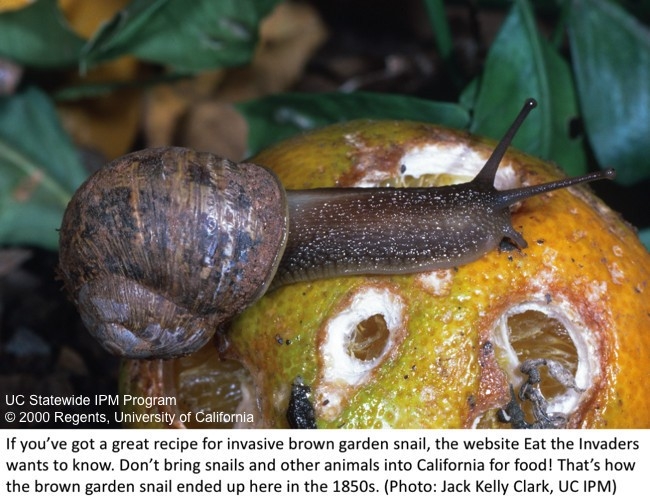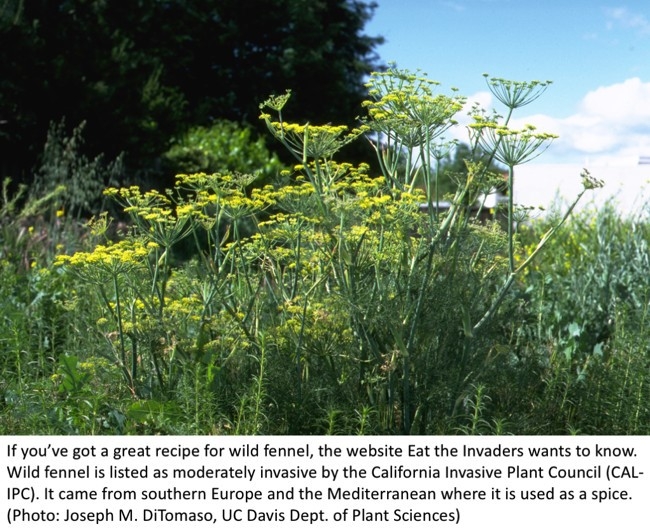Summer—it's a time for swimming, BBQs, camping, and eating invasive species
Last week during California Invasive Species Action Week (June 2 – June 10), we highlighted several pests, but there are many more invasive species out there. Now that you know about them, share your knowledge of invasive species with others. And no matter what your summer plans, here are some things YOU can do about invasive species from the California Department of Fish and Wildlife and California Department of Food and Agriculture.
YOU: I'M TRAVELLING TO AMAZING PLACES
- Learn what plants and animals you could bring into California.
- Don't pack a pest! Declare all food and agricultural items from other states or countries.
- Find out which species are threats to California.
- Learn about California's invasive plants.
- Avoid spreading forest pests: buy your firewood where you burn it.
YOU: I'LL BE WORKING IN MY GARDEN
- Remove invasive plants from your property.
- Select native or non-invasive plants for your garden.
- Use only certified weed-free forage, hay, seed, mulch, soil, and gravel.
- Learn alternatives to releasing unwanted fish, aquatic plants, and other pets.
- Monitor plants and trees for symptoms of infestations and disease.
- Learn about California's invasive plants.
- Have you spotted an invasive species? Tell us where by reporting your sighting.
YOU: I'LL BE NEAR THE WATER OR ON A BOAT
- Join the statewide citizen science effort to monitor for quagga mussels.
- Join the iNaturalist project, California Nerodia Watch, and help us find Nerodia watersnakes.
- Make sure to Clean, Drain, and Dry (PDF) your boat after each outing.
- Learn alternatives to releasing unwanted fish, aquatic plants, and other pets.
- Visit your favorite local, state, or national park, ecological reserve, recreational area, or nature center and ask about their volunteer programs.
- Learn about California's invasive plants.
- Have you spotted an invasive species? Tell us where by reporting your sighting.
YOU: I'LL BE OUT AND ABOUT CAMPING, HIKING, OR RIDING HORSES
- Use only certified weed-free forage, hay, seed, mulch, soil, and gravel.
- Avoid spreading forest pests: buy your firewood where you burn it.
- Prevent the spread of plant pathogens that damage and kill California's native plants and trees.
- Learn about California's invasive plants.
- Visit your favorite local, state, or national park, ecological reserve, recreational area, or nature center and ask about their volunteer programs.
- Have you spotted an invasive species? Tell us where by reporting your sighting.
YOU: I'LL DEFINITELY CONTINUE TO LEARN ABOUT INVASIVES
- Get to know your local invaders.
- Learn about California's invasive plants.
- Find out which species are threats to California.
- Learn alternatives to releasing unwanted fish, aquatic plants, and other pets.
- Eat them. Yum. Check out these websites to find out who is edible and how to prepare them.
- Invasive-eats.com (California-specific)
- Invasivore.org (under construction but hopefully back soon)
- EatTheWeeds.com
- EatTheInvaders.org
If you missed it this year, help in the fight next year by learning and participating during California Invasive Species Action Week.
Attached Images:


